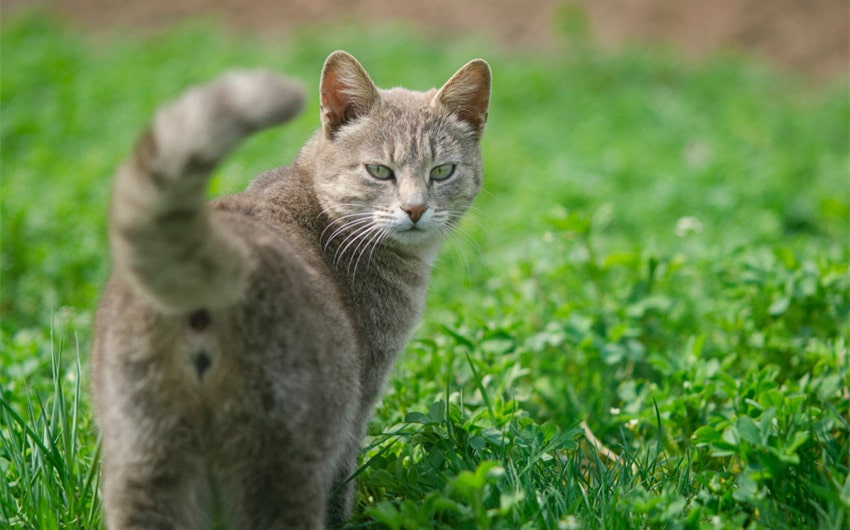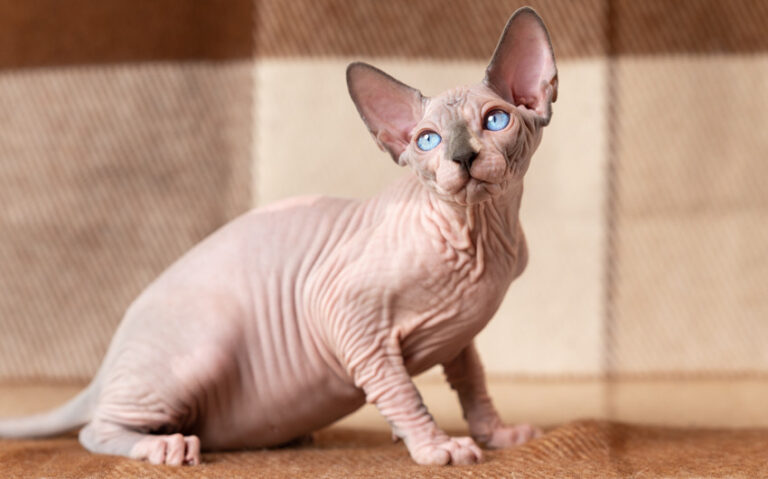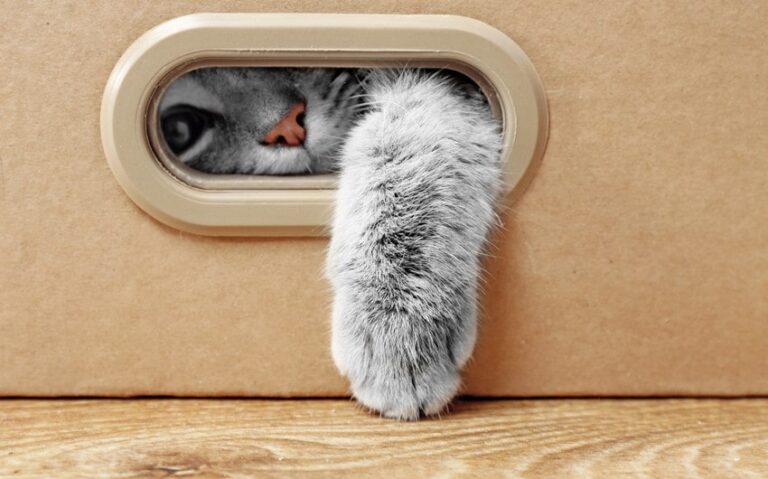Why Are Cats’ Backs So Sensitive? Understanding Feline Spinal Reactions
If you’ve ever wondered, “Why are cats’ backs so sensitive?” you’re definitely not the only curious cat parent. Maybe your feline arches dramatically when you pet them, twitches at the slightest touch near their tail, or even swats at you after a seemingly gentle stroke down the spine. While some cats enjoy a good back rub, others react with surprising intensity—skin rippling, tail flicking, sudden biting, or spontaneous zoomies. These responses can be confusing or even concerning if you’re unsure what’s causing them.
The truth is, a cat’s back is a complex landscape of nerve endings, behavioral triggers, and potential medical sensitivities. Some reactions are perfectly normal, part of your cat’s instinctive communication style. Others, however, may signal discomfort, overstimulation, or underlying health issues that need attention. Understanding what’s behind your cat’s back sensitivity can help you respond appropriately and deepen the bond you share with your feline friend.
Let’s explore the main reasons why cats’ backs are so sensitive, starting with the biology that makes their spines such a responsive zone.
1. High Nerve Concentration Along the Spine
Cats are incredibly sensitive animals, both emotionally and physically. One of the most common reasons for sensitivity along their backs is the sheer density of nerve endings located in the skin and muscles surrounding the spine. These nerve endings are finely tuned to detect changes in touch, temperature, pressure, and pain—evolutionary tools that helped cats survive in the wild.
Think about how a cat reacts when a fly lands on its fur. Even the tiniest disturbance triggers a full-body shake or targeted twitch. This acute sensitivity allowed wild cats to detect subtle threats or insect bites before they became problems. While your housecat may be more concerned with breakfast than predators, its body retains that same heightened reactivity.
The area along the spine, especially near the base of the tail, is particularly rich in sensitive nerve clusters. For some cats, light petting in this region produces pleasurable stimulation. For others, it feels like a sensory overload, triggering reflexive movements or even defensive behavior. It’s important to observe how your cat reacts—some may lift their hindquarters affectionately, while others may twitch, tense, or dart away.
2. Grooming Behavior and Social Signals
Feline grooming behavior also plays a role in how sensitive a cat’s back might be. In the wild and in multi-cat households, grooming is both a self-care ritual and a form of social bonding. Cats will often groom one another’s heads, necks, and backs—areas they can’t easily reach themselves. These grooming sessions are gentle but can also involve tiny nibbles and tugging, especially along the spine and tail base.
As a result, these parts of the body become zones of social interaction. Your cat might associate touch in these areas with specific social cues—like bonding, dominance, or playfulness. So, when you stroke your cat’s back, they may interpret it as a cue to play, groom back, or assert themselves. This can lead to mixed signals: a purr one second, a nip the next.
Some cats are more sensitive than others to these cues. Breeds like Bengals, Abyssinians, or Siamese—known for being highly interactive—often display more expressive back responses, from tail quivers to exaggerated arching. Understanding your cat’s individual communication style can help you know when back petting is welcome—and when it’s best to stop.
3. Feline Hyperesthesia Syndrome (FHS)
One medical condition that directly affects back sensitivity is Feline Hyperesthesia Syndrome, often called “rolling skin syndrome.” Cats with FHS exhibit unusually intense reactions to touch, particularly along the spine. Common symptoms include:
-
Rippling or twitching of the skin
-
Sudden grooming or biting of the back or tail area
-
Dilated pupils and agitation
-
Running erratically or vocalizing without clear triggers
-
Reacting strongly to being petted in certain spots
FHS is believed to be a neurological condition, possibly linked to seizures or sensory processing issues. It tends to appear in young to middle-aged cats, and while it can be mild in some cases, severe episodes may require medical treatment. Stress, changes in routine, or overexcitement can worsen symptoms.
If your cat’s back sensitivity comes with any of the above signs—especially if episodes are frequent or distressing—it’s important to consult your veterinarian. Diagnosis may include ruling out other causes like skin allergies, flea infestations, or spinal issues. In some cases, medication, environmental management, and stress reduction techniques can help control symptoms.
4. Underlying Medical Causes
Not all back sensitivity is neurological or behavioral. Sometimes, your cat’s reaction to being touched on the spine is due to pain or discomfort that isn’t immediately visible. Here are some possible medical explanations:
Arthritis or Spinal Pain:
Older cats, especially those over the age of ten, are prone to arthritis and joint degeneration. While we often associate arthritis with legs or hips, it can also affect the vertebrae. If petting the back causes flinching, tenseness, or retreat, joint pain may be the culprit.
Nerve Impingement or Injury:
Past injuries, poor posture, or even rough handling can irritate the nerves along your cat’s spine. Just like in humans, compressed or inflamed nerves can make even gentle touch feel painful.
Allergies or Skin Irritations:
Fleas, mites, or food sensitivities can cause inflammation and itchiness along the back. A cat with skin irritation may twitch or scratch when touched—even if the skin looks fine on the surface. In some cases, tiny scabs, dry skin, or excessive shedding can point to dermatological issues.
Obesity or Poor Muscle Tone:
Overweight cats may develop uneven pressure along the spine, especially near the tail. This can make back petting uncomfortable. Similarly, under-muscled cats may have less cushioning around their spine, increasing sensitivity.
If your cat’s back reaction seems to be a new behavior or is paired with changes in grooming, mobility, or posture, it’s time for a vet check-up. Many of these conditions are manageable with early intervention.
5. Emotional and Environmental Stress
Stress doesn’t just affect a cat’s mood—it can also impact how their body reacts to physical touch. Cats under emotional strain may hold tension in their muscles, especially along the spine and shoulders. If your cat is feeling anxious or overstimulated, even routine petting can trigger a reactive or defensive response.
Stress can come from many sources: a new pet, changes in schedule, unfamiliar visitors, or even a new scent in the house. Cats are highly attuned to their environment, and they often express their discomfort through body language before vocalizing distress.
An anxious cat may:
-
Twitch its skin when touched
-
Flatten its ears or flick its tail
-
Lick or bite the air during back strokes
-
Bolt suddenly during petting sessions
Understanding your cat’s stress triggers and creating a calm, predictable environment can reduce these responses. Consider offering vertical spaces, calming pheromone diffusers, or a consistent daily routine to help your cat feel more secure. Reducing general tension often leads to fewer reactive moments when their back is touched.
How to Respond to a Sensitive Cat
If your cat has a sensitive back, the key is learning to read their body language and respect their boundaries. Some cats are just more sensitive than others, and that’s okay. The goal isn’t to force tolerance but to create trust.
Here are some tips for handling a cat with a sensitive spine:
-
Watch Their Signals: If your cat’s ears flatten, tail twitches, or back muscles ripple while you’re petting them, stop. These are early signs of overstimulation.
-
Avoid the Tail Base (Unless Invited): The area near the tail is extremely sensitive. Some cats enjoy being scratched here, while others hate it. If your cat leans in, it’s a green light. If they flinch or duck, give them space.
-
Pet Shorter Strokes: Rather than running your hand from neck to tail, try shorter strokes focused on the head, cheeks, or upper back. These are usually safer zones for sensitive cats.
-
Use Soft Brushes or Combs: When grooming, opt for gentle tools that don’t tug on the skin. Brush with the grain of the fur and avoid pressing too hard.
-
Play First, Pet Later: Burning off excess energy with interactive play can reduce hypersensitivity. A cat that’s physically and mentally satisfied is often more open to touch.
-
Consult a Vet If Needed: If the behavior changes suddenly or is paired with physical symptoms like limping, excessive grooming, or weight loss, schedule a veterinary exam. Ruling out medical causes is always the first step.







